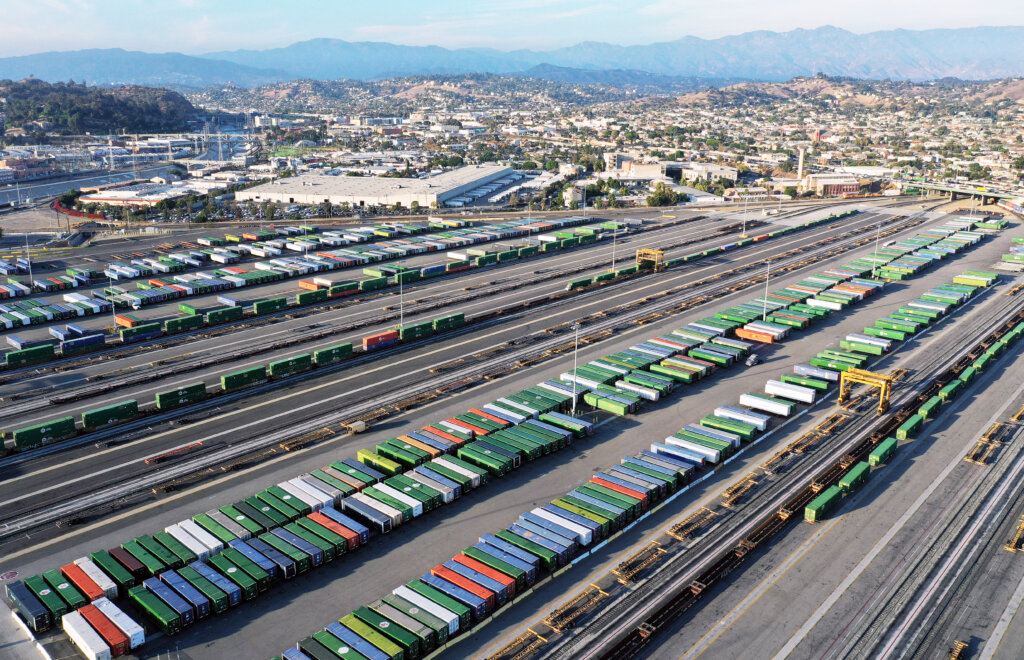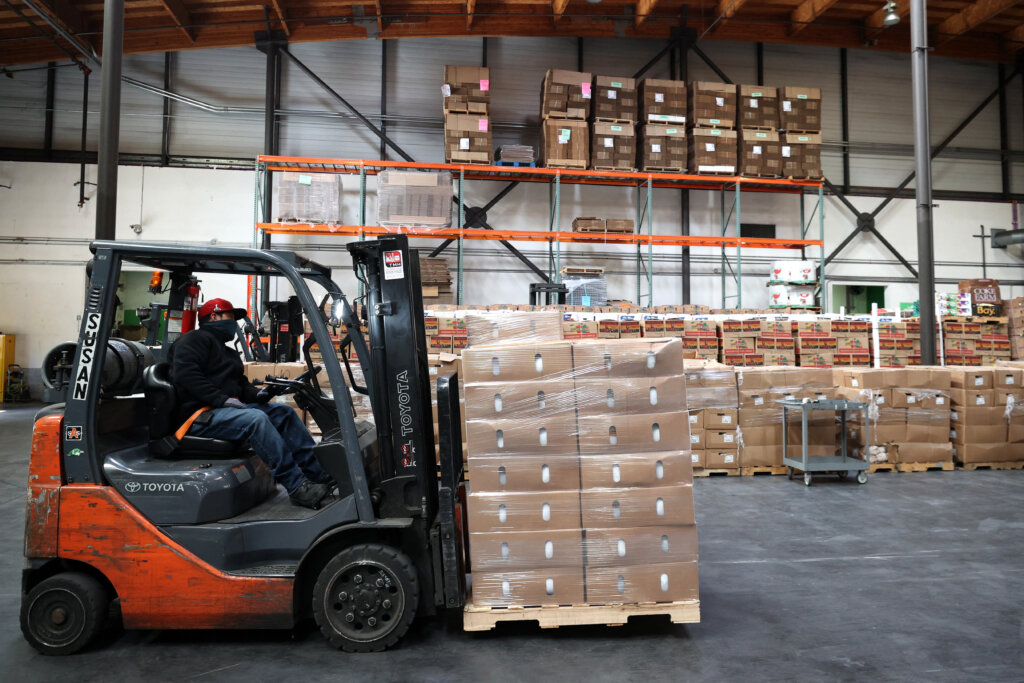Even Santa’s reindeers can’t solve holiday season supply chain agony

- Supply chain issues have been delaying products for months, and are expected to impact the holiday season as well
- Logistics companies are investing in supply chain technology to help deal with the problem
- Demand for AI, data analytics, warehousing tools are on the uptick
As Christmas and the holiday season approaches, supply chain logistics is a major developing conundrum on a global scale. The disruption has already led to delays in product shipments in the manufacturing sector and is now seemingly headed to affect the holiday season, with consumers buying more products for the gifting season.
In the UK, The Guardian reports that supply chain logistics have already caused the manufacturing industry to struggle, particularly with finding the right materials, after months of disruption to production and delivery schedules caused by pandemic lockdowns. One persistent problem has been a shortage of computer chips, which has affected car manufacturers in the UK and worldwide.
CNBC reports that top executives at multiple European blue-chip companies felt that supply chain problems, labor shortages, and inflationary pressures will run for longer than policymakers are expecting. Meanwhile in China, Reuters reported that the annual Singles’ Day shopping frenzy grew 8.5%, the slowest rate ever, underscoring strong regulatory and supply chain headwinds for China’s tech firms. The event, which normally draws millions or merchants and shoppers with flashy deals, may not have lived up to its expectation as many European brands are not able to meet the demands of the consumers in that region due to supply chain logistics issues.
While businesses are aware of the seriousness of the problem at hand, shoppers in the UK are still hoping for a Christmas miracle to solve the supply chain logistics problem. Skynews reported that a poll by Barclaycard showed that shoppers are buying Christmas gifts earlier than usual due to logistics and supply chain concerns.

(Photo by JOE RAEDLE / GETTY IMAGES NORTH AMERICA / Getty Images via AFP)
So why is supply chain logistics a big problem?
Many have blamed Brexit for shortages of products, raw materials, and even truck drivers. While Brexit does play a role in this, a big part of the problem is also the fact that most of these products are coming from China or Southeast Asia. For example, toys, mobile and electronic devices, which make popular holiday gifts, generally are made and shipped from that part of the world.
When it comes to shipping, for Niko Polvinen, the CEO at Logmore, logistics companies can do a lot to optimize the ways they work and to manage expectations down the chain, but talking about the supply chain bottlenecks that the world is currently experiencing, it’s also important to remember that in many cases, the goods just aren’t there to ship. Many items, including electronic components, machine parts, tools, and even the containers themselves, are simply hard to come by.
“if we’re focusing on delayed shipping of ready-made goods, shipping by sea is currently in the worst situation because of the acute shipping container deficit. So perhaps the biggest aspect of the challenge comes down to dependence on marine freight routes. Currently, with sea shipments, prices are skyrocketing and more than 50% of vessels arrive later than originally scheduled. And that has a domino effect,” said Polvinen.
At the same time though, Polvinen pointed out that logistics companies are investing heavily into building more capacity for container shipments. It will take a while to see the impact of these investments, but eventually, things will start improving. Simultaneously, air shipments have become much more competitive in terms of price, and many operators have shifted their deliveries from sea to air, to enable fast and more reliable delivery schedules.
“No matter what type of logistics you use, I’m a big believer in data analytics. Do everything in your power to give yourself the maximum visibility into where your shipments are located at any given moment and how they’re being cared for, both on a macro and micro level, so you can optimize your supply chain regularly, from the shipping methods to the contractors you use to the routes. With so much volatility at play, it’s only with extra visibility that you can make the changes that you need to make and keep everyone’s expectations aligned,” added Polvinen.
Today, the world economy is so connected, and most companies are extremely focused on their core areas of excellence while outsourcing the rest to their partners and subcontractors. This leads to a situation where the challenges of one company can potentially affect thousands of other companies. The best retailers can do is to act fast, and use their procurement expertise to find the best possible alternatives and offer those to customers instead.

(Photo by MARIO TAMA / GETTY IMAGES NORTH AMERICA / Getty Images via AFP)
The role of technology
The problem was getting shipments out from that continent and to the UK in time. And this is where supply chain technology comes into play. Technologies like AI and robotics can provide some help for dealing with the issue. Google had recently unveiled supply chain digital twins for businesses to manage their supplies while some companies are using blockchain to trace products and shipments.
Co-Founder and CTO at GreyOrange, Akash Gupta wound up using AI-powered robots to pick up the slack in roles where there aren’t enough people available. In an interview with Open Access Government, Gupta said a prime example of this can be seen by looking at fulfillment centers. In this instance, AI-powered robots can do the heavy lifting when people aren’t available, ensuring that business as usual can continue and products can be delivered on time.
Interestingly, Polvinen pointed out that one indirect result of the shipping crisis and longer lead times is that in many cases it affects the quality of goods. When the delivery lead time is longer than expected, it can easily affect the goods in many ways, such as temperature or humidity exposure, and quality assurance becomes more crucial than ever. For this, Logmore has built an easy and scalable reporting system that automates the quality assurance process by tracking the shipment conditions and the events in which the goods are delivered.
In fact, there are a lot of other players in the industry who are doing interesting things with tech as well. Hellmann’s SmartAir, created in cooperation with BlueBox Systems, allows people to track air freight shipments in real-time using only their web browsers. FourKites’s visibility platform is an industry leader when it comes to tracking shipments across the world, end to end, integrating with a wide network of suppliers and data providers. And Danish shipping giant Maersk has been doing an amazing job of using data to manage the flow of containers, despite shortages, so that available ones can be filled and shipped as needed.

(Photo by JUSTIN SULLIVAN / GETTY IMAGES NORTH AMERICA / Getty Images via AFP)
Helping the smaller guys with logistics
Despite the uncertainties in supply chain logistics, US-based logistics unicorn ShipBob hopes to help small and medium-sized brands offer an Amazon-like experience by providing rapid and cost-effective deliveries. Like Amazon, ShipBob offers brands a high proportion of warehouses in each territory to facilitate fast delivery.
For UK brands, alongside enhancing domestic deliveries, partnering with ShipBob will offer British brands instant access to consumers across the North American market and the ability to ship to US shoppers within days. ShipBob will also provide brands with peace of mind against supply chain challenges by offering instant access to its network of popular national and international carrier partners, ensuring that products can always be delivered to a consumer’s door.
Enda Breslin, ShipBob EMEA General Manager believes their technology and model for launching warehouses can help them avoid many of the current challenges and keep products flowing around the world relatively freely. “We tend to focus on launching many smaller fulfillment centers in a country rather than being overly reliant on a small selection of large sites. This means products are never too far away from the end consumer and means we’ve got plenty of contingencies if there are issues transporting goods from one site to another,” he commented.
Breslin believes that while large household name retailers are under severe pressure from the global supply chain crisis, the coming months may actually supercharge the growth of more nimble emerging e-Commerce brands. ShipBob may provide some relief to the smaller players, but the reality is that supply chain logistics problem is not going to end anytime soon. And with the holiday season coming in fast, it seems that even Santa’s reindeers’ may not be able to offer much help.
As Polvinen puts it, “Unfortunately, it will take time. Component shortage is expected to continue throughout 2022, and the global shipping situation is most likely going to follow the same pattern. I do believe that we’ll get there, but as said, this will take time.”










